ERP Case Study of Geneva Pharmaceutical Inc.
Question
Task: For this component you will be required to analyse ERP case study of an organization and write a report on it on a recent academic paper on a topic related to ERP implementation on any organization.
Answer
1. Introduction
Increasing complexities in human resource, treasury and logistics have been observed in established organisations due to the advent of globalisation. This requires the organisation to use updated information and data which involves the various internal departments that are involved in complex business functions carried out by the organisation [4]. For this reason, several companies have considered the implementation of Enterprise Resource Planning (ERP) which can make available the requisite updated information. SAP is a commonly used software that is considered to be a method of ERP implementation. The usage of this software within their systems has enabled organisations to meet enterprise requirements and reach their goals through a standardisation of the software used [5].In an article by [8] regarding “An ERP Implementation Method: Studying a Pharmaceutical Company”, the authors have identified the implementation of SAP as a standardisation software that can be used in organisations for achieving goals and objectives. This report will be focusing on the relevance of the article, critiquing the research methodologies used in this article, discuss the results obtain, mention the limitations of the paper and analyse the inferences achieved by the authors.
2. Article Evaluation
2.1 Relevance of the Article
The implementation of standard software packages as an ERP solution is a complex process which requires predefined parts which requires extensive knowledge from various sources and experts [6]. SAP is a software that helps organisations to achieve the goals and objectives because it has structured software modules in every functional area such as human resource, operations, supply chain management and finance [8]. The significance relevance of the article lies in the ontology of methodology which uses the Reusable Organisational Change (ROC) in analysing a fictional company Electro Tech by using several models. Another significance of the article is the alignment of ERP with Enterprise which includes modelling the recent state and proposed system. The study then focuses on applying the ROC framework and models of aligning the organisational needs of SAP by applying it to Geneva Pharmaceutical Inc. which is considered to be the leading standard drug manufacturers in North America with its parent company Novartis International AG based in Switzerland.
The relevance of this article is the analysis of the information system that is used by Geneva Pharmaceutical Inc. and the implementation of SAP as a standardised software within its IT systems. The earlier multiple software system that was used by the company was sued to control the various internal functions of the company such as accounting, sales, procurement, human resources and manufacturing of products. The hardware and software used by the company was IBM’s technologies. The configurations which were used by the software was considered to be obsolete which led to several data entry mistakes and inconsistencies in data [8]. Moreover, value added processes were not supported by them which hampered several functions such as supply chain management. Therefore, through this article the authors have attempted to understand the implementation of SAP as a generalised software system which will augment the demand side implementation and integrate the supply and demand of the enterprise as an ERP solution.
2.2 Research Methodology of Article
Research methodologies of an academic article is considered to be the most significant element of the study. There are several research methodologies that are adopted by researcher for constructing a study pertaining to their area of focus [9].For writing this paper, the authors have considered applying the fundamental research methodology by consulting several relevant external works. They have aimed in investigating the implementation of SAP as an ERP systems within a pharmaceutical company namely Geneva Pharmaceutical Inc., that requires the application of theories and models in analysing a case. Also, it has been observed that since the authors have researched a case without attempting to generalise it, the fundamental research methodology is used by them. The fundamental research methodology is applied for exploring a case study of Geneva Pharmaceutical Inc. and the basic application of ERP implementation theories and models regarding SAP within the company.
For administering the explanatory case study methodology, the authors have used secondary data collection method from related external works of other significant academic research articles. The nature of data that has been analysed by the authors is qualitative in nature which justifies the use of the fundamental research and explanatory case study research methodologies used by the authors. Furthermore, it is deemed that the advantages of using these methodologies for undertaking the study include maintaining the assimilation of the data collected and observing significant patterns and relationships between them [11]. Any underlying complexities that are prevalent in the study can be observed in depth by administering this research methodology [18].
2.3 Results Obtained
The results obtained by the author can be divided into two parts concerning the generalised application of models and aligning ERP to enterprise and the case study of Geneva Pharmaceutical Inc. The second section of the article has evaluated that the ROC framework has four significant affinities which are goals of organisations, models of business processes, project deliverables and planning of requirement reuse. These generic affinities further consists of four segments which are elicitation, specification, validation and reuse evaluation [8].
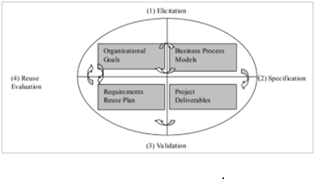
Figure 1: Application Processes of ROC Framework
(Source: Kolezakis, 2018)
The goal-elicitation sub model of the article is focused on achieving the goals and objectives of an enterprise which are related to the internal and external stakeholders. It should be noted that software systems are primarily built for achieving strategic needs and organisational goals which generate from the various functional areas of the organisation [7]. In order to achieve the enterprise’s goals, they need to be more specific that will lead to ensured achievement of them. For this, using a standardised software system such as SAP is highly commendable as part of an ERP solution.
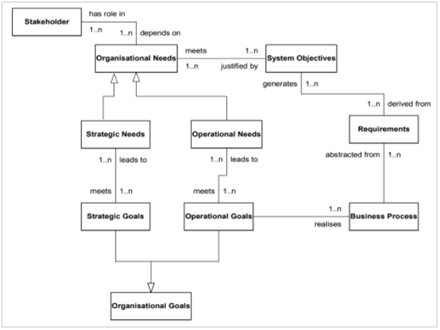
Figure 2: The Goal-Elicitation Sub-model
(Source: Kolezakis, 2018)
The specification of the business process sub-model highlights the significance of sing a centralised system in identifying and implementing the change goals of an organisation. This requires an integrated IS because of the better MIS services required for the change in goals [8]. On the contrary, the validation sub model considers the compliance procedures of implementation an ERP solution system within its framework because of the specific needs. The model emphasises on defining the SAPgoals, processes and strategies for devising a method of establishing SAP functions with the organisational goals and objectives.
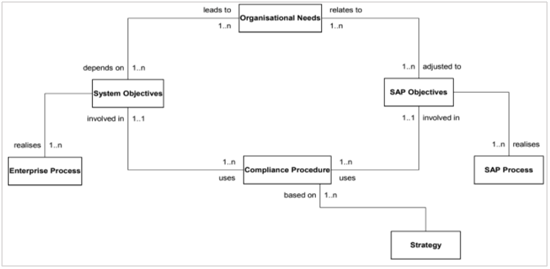
Figure 3: Validation Sub-model
(Source: Kolezakis, 2018)
In the third section of the article, the authorhas examined and modelled extensively further explorations pertaining to the alignment of organisational processes and SAP with regards to the validation and elicitation dynamic affinities. The results obtained in this section can be segmented in logical organisations, modelling the recent state and proposed system. In the first segment the author has stated the abstraction levels which are the intentional level, strategy level and operational level pertaining to the implementation of SAP within an organisation. The modelling of recent state have evaluated several significant issues related to the implementation of SAP in organisational systems. This includes the lack of strategies in demand management regarding the supply of raw materials, no strategies for real time production, problems in approving vendors and the absence of an online ordering process [10]. These problems are segmented into demand-side problems and supply chain problems. A proposed solution of SAP has been suggested as part of correcting the problems identified which is given below: -

Figure 4: Proposed SAP Solution
(Source: Kolezakis, 2018)
The proposed state modelling of implementing SAP software within enterprise systems have led to the adoption of the functional area of sales and marketing as an instance. According to this sample modelling, the details of the required materials are entered in the system for capacity planning which ensures the scheduling and dispatching. However, the smooth functioning of this model requires an enterprise to accurately forecast the sales based on the feedback gained from potential customers or other elements of market predictors [1].
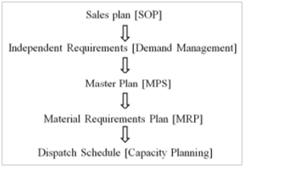
Figure 5: Production Process Planning using SAP
(Source: Kolezakis, 2018)
The second part of the results contain the observations of implementing SAP as an ERP solution in Geneva Pharmaceutical Inc. As it has been mentioned earlier that the company’s IT system was regarded as obsolete due to the multi software programmes it was using. However, the significant drawbacks displayed by the usage of such an obsolete system have resulted in the implementation of SAP whose alignment with the enterprise goals and objectives have been done using the ROC framework. Various SAP modules have been formed for the specifically targeted business processes pertaining to the management of order [3].
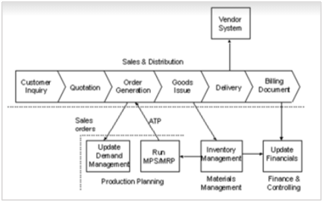
Figure 6: Business Process which are Targeted for Order Management (Source: Kolezakis, 2018)
Upon analysis, it has been inferred that the demand side implementation of SAP as an ERP solution within Geneva has simplified the marketing and sales, customer service, order fulfilment, incorporating reengineered processes and accounts receivable. Moreover, the inventory control and management is also enhanced from the usage of SAP software systems. It has been observed that before using SAP, the operations of the enterprise were done manually. However, with the incorporation of SAP, the sales and operations planning has been segmented into forecasting the strategy, supply planning strategy, integration strategy, business strategy and planning.

Figure 7: Sales and Operations Planning using SAP
(Source: Kolezakis, 2018)
2.4 Limitations of the Article
Every research article has significant identified limitations that may or may not be mentioned within the paper [6]. In this article, the authors have not mentioned the limitations that are prevalent in the research. It is observed that the study has considerable lack of quantitative data analysis using mathematical and statistical tools which can be used to establish the significance of an established hypothesis. Moreover, it is apparent that the study is lacking rigor due to the absence of applying quantitative data analysis for verifying the facts in the case study.Also, it is seen that the article does not explain the tools used and the degree to which they produce chances of identifying discernible patterns in the secondary data used by the research scholars.
2.5 Inference Achieved
The inferences obtained by the authors have been summarised in this section which states that SAP is not developed in a unified manner but as a targeted process which will help in simplifying the various functional areas of an organisation. With certain adjustments being done in the targeted processes by regarding the significant components and their implementation, the incorporation of SAP within enterprise systems can be made. This in turn will help organisations achieve their goals and objectives since they will align with the SAP goals and maximise the profit [8]. It is also inferred by the authors that by choosing SAP as an ERP solution, the possibility of gaining in the long run is more apparent. It should be noted ERP systems are considered to be large and complex involving the interaction of several components. Therefore, taking concurrency and modularity into consideration, the identification of each component of the system is plausible along with its implementation [5].
3. Conclusion
ERP solutions are being increasingly implemented by enterprises for the simplification of functional areas such as human resources, operations, marketing and sales, finances and supply chain management. Upon evaluation, it is seen that the significance of the article is identifying the implementation of SAP software systems within enterprises as an ERP solution. The research methodology that has been applied by the author is the fundamental research methodology by consulting several relevant external works. For administering the explanatory case study methodology, the authors have used secondary data collection method which is qualitative in nature. In order to achieve the enterprise’s goals, they need to be more specific that will lead to ensured achievement of them. For this, using a standardised software system such as SAP is highly commendable as part of an ERP solution. However, lack of quantitative data analysis using mathematical and statistical tools questions the rigor of the research and verification of the facts.
References
1. Ali, M., & Miller, L. (2017). ERP system implementation in large enterprises–a systematic literature review. Journal of Enterprise Information Management.
2. Basias, N., & Pollalis, Y. (2018). Quantitative and qualitative research in business & technology: Justifying a suitable research methodology. Review of Integrative Business and Economics Research, 7, 91-105.
3. Fernandez, D., Zaino, Z., & Ahmad, H. (2018). An investigation of challenges in Enterprise Resource Planning (ERP) implementation: The case of public sector in Malaysia. International Journal of Supply Chain Management, 7(3), 113-117.
4. Hadidi, L., Assaf, S., & Alkhiami, A. (2017). A systematic approach for ERP implementation in the construction industry. Journal of Civil Engineering and Management, 23(5), 594-603.
5. Jayawickrama, U., Liu, S., & Smith, M. H. (2017). Knowledge prioritisation for ERP implementation success. Industrial Management & Data Systems.
6. Jinno, H., Abe, H., & Iizuka, K. (2017). Consideration of ERP effectiveness: From the perspective of ERP implementation policy and operational effectiveness. Information, 8(1), 14.
7. Kiran, T., & Reddy, A. (2019). Critical success factors of ERP implementation in SMEs. Journal of Project Management, 4(4), 267-280.
8. Kolezakis, E. (2018). An ERP Implementation Method: Studying a Pharmaceutical Company. arXiv preprint arXiv:1901.01810.
9. Kumar, R. (2019). Research methodology: A step-by-step guide for beginners. Sage Publications Limited.
10. Menon, D. (2019). Critical challenges in enterprise resource planning (ERP) implementation. International Journal of Business and Management, 14(7).
11. Mohajan, H. K. (2018). Qualitative research methodology in social sciences and related subjects. Journal of Economic Development, Environment and People, 7(1), 23-48.
12. Nandi, M. L., & Kumar, A. (2016). Centralization and the success of ERP implementation. Journal of Enterprise Information Management.
13. Osman, N. (2018). A software requirement engineering framework to enhance critical success factors for erp implementation. International Journal of Computer Applications, 180(10), pp-32.
14. Ranjan, S., Jha, V. K., & Pal, P. (2016). Literature review on ERP implementation challenges. International Journal of Business Information Systems, 21(3), 388-402.
15. Rouhani, S., & Mehri, M. (2018). Empowering benefits of ERP systems implementation: empirical study of industrial firms. Journal of systems and information technology.
16. Snyder, H. (2019). Literature review as a research methodology: An overview and guidelines. Journal of Business Research, 104, 333-339.
17. Tobie, A. M., Etoundi, R. A., & Zoa, J. (2016). A literature review of erp implementation in african countries. The Electronic Journal of Information Systems in Developing Countries, 76(1), 1-20.
18. Zangirolami-Raimundo, J., Echeimberg, J. D. O., & Leone, C. (2018). Research methodology topics: Cross-sectional studies. Journal of Human Growth and Development, 2












